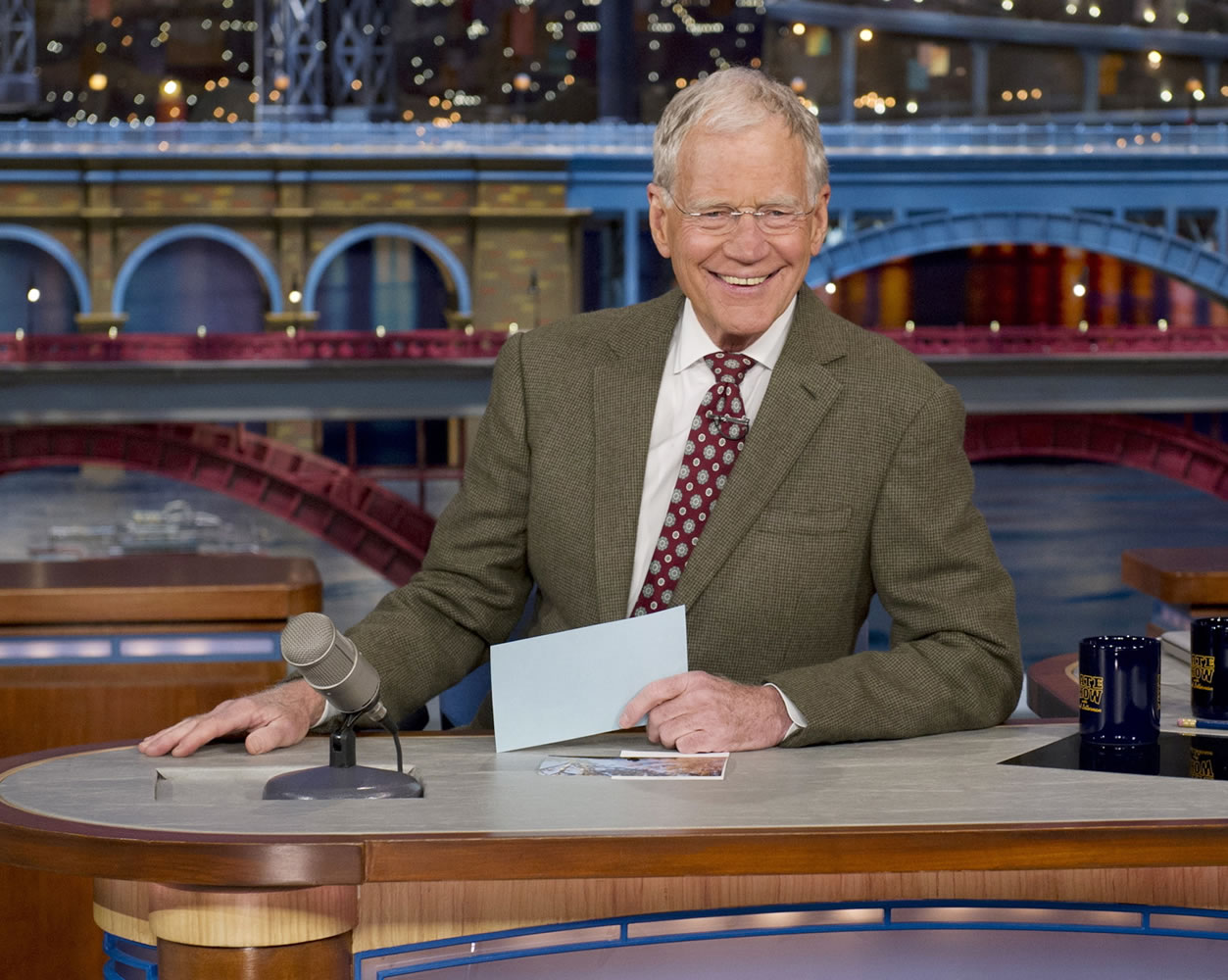NEW YORK — The future is Stephen Colbert.
The Comedy Central talk-show star was named Thursday to replace David Letterman when he steps down from CBS’ “Late Show” next year.
But what about the past and the present? Let’s try for a little historical perspective by comparing the late night landscape that greets Colbert’s announcement against the world in which “Late Show” was born:
o THEN: Dave arrived in the 11:35 p.m. slot on Aug. 30, 1993, with a startup venture for CBS going up against NBC’s venerable “Tonight Show,” where Jay Leno had already reigned for 15 months.
Apart from those arch-rivals, broadcast TV had only four other players in late night comedy-talk: Letterman’s old haunt, “Late Night,” where Conan O’Brien would soon preside, followed by “Later With Bob Costas,” plus the syndicated “Arsenio Hall Show.” Also, debuting a week later, “The Chevy Chase Show” aired for just a month on Fox. And none of the hosts was named Jimmy.
o NOW: There are at least 11 such shows on broadcast or cable, with roughly 18 percent of them hosted by a Jimmy.
o THEN: Although three-fourths of TV homes had VCRs (enabling a “late night” show to be time-shifted to any hour, day or night), almost no one knew how to program them, or had even gotten around to setting the clock. And no one owned a digital video recorder — maybe because it hadn’t been invented yet.
o NOW: Roughly half of TV homes (whether with or without VCRs) are equipped with DVRs, which further undermines the meaning of “late night”: Most of these shows are taped around dusk, then plugged into a late night slot where they’re available for a viewer to retrieve and watch whenever the mood strikes. With TV, “late night” is more a state of mind than a time of day.
o THEN: The term “Internet” would have registered barely a blip of recognition for most viewers, and, if by chance they had home Internet service, it only gave them crawling text through a dial-up connection. Web? Social media? YouTube? Streaming video? Google search? App? Whazzat?!
o NOW: Tweeting, second-screen interaction and viral video clips are necessary supplements to shore up the eroding audience a talk show can command solely on the TV platform.
o Speaking of which, THEN: The shiny new “Late Show” was scoring about 5.2 million viewers nightly, while “Tonight” averaged 4 million.
o NOW: Since Jimmy Fallon replaced Leno in February, NBC’s “Tonight” has averaged about 5.2 million viewers (a huge initial boost from Leno’s final-year average of 3.5 million), while Letterman and ABC’s Jimmy Kimmel have each averaged about 2.7 million.
Many changes, indeed. But even in a changing world, some things never change.
o THEN: Among that handful of hosts, only one was a black man.
o NOW: Among today’s crush of hosts, only one — that same guy, Arsenio Hall — is black.
o THEN: No women were hosting.
o NOW: One woman is a host — Chelsea Handler, though she has said she is ready to exit her E! program.
o THEN: For months, media reporters just couldn’t stop churning out coverage of the Late Night War.
o NOW: Now, with news of Stephen going in for Dave, we’re just getting started on another siege of stories.



